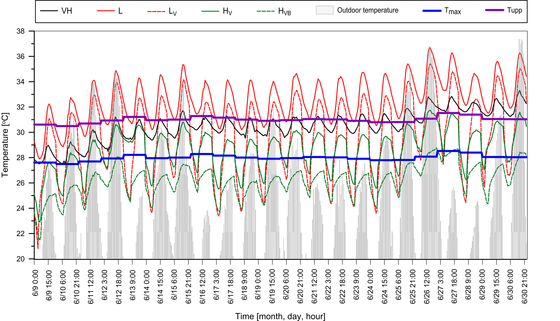05.09.2021
Effect of thermal mass, night ventilation and window shading on summer thermal comfort of buildings in a temperate climate
Night ventilation and external blinds are the most commonly used passive methods to protect buildings from overheating during high summer temperatures. Another recommended measure is high thermal inertia of buildings. The aim of the study was to compare the effectiveness of night ventilation, external blinds and thermal mass on the summer thermal performance of a building in a temperate climate. Increasing the thermal mass of the room from light to very heavy without night ventilation resulted in a reduction of the average peak temperature by 3.7 K in a day and 1.2 K by night. The activation of night ventilation in a light room resulted in a reduction of the average value of the peak temperature by 1.5 K during the day and 5.9 K at night. Increase of thermal mass from light to heavy and night ventilation from 0.6 to 10 ACH led to decrease of average peak temperature by 4.7 K in a day and 4.6 K by night. The simultaneous increase of thermal mass, activation of night ventilation and closing of external blinds resulted in lowering the average peak temperature by 7.4 K in a day and 6.3 K by night. The analysis of the test results indicates that the high thermal mass and the closing of the external blinds reduces the diurnal variations of the indoor temperature, while the activation of night ventilation increases it significantly, especially for lightweight construction.
More information can be found on the Educational Platform.




